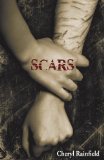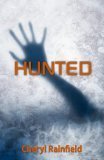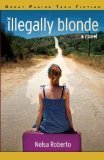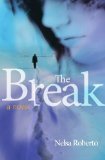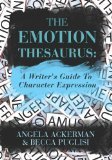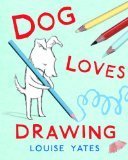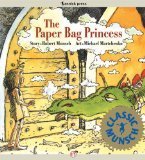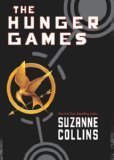Cheryl Rainfield's Blog, page 66
September 17, 2012
Writing your emotional truths can be painful but worth it: My Q&A with Sharon Roat
A Q&A that I did with Sharon Roat is up, where I talk about my experience of writing SCARS, how I got my agent, how writing HUNTED was a similar process to SCARS, and my upcoming novel STAINED. I hope you’ll check it out. 
September 13, 2012
Love this banned books video by Bookmans
I absolutely love this Banned Books video by Bookmans (an Arizona bookstore) to help launch the national (US) read-out from banned and challenged books for Banned Book Week CSept 30-Oct 6). The video shows Bookmans staff and customers each reading a single line from a banned or challenged book–reading wisdom, advice, and celebrating banned books.
September 11, 2012
Scars a Staff Pick for Teaching Tolerance magazine
I just found out that SCARS is a Staff Pick in Teaching Tolerance magazine! (beaming) I love Teaching Tolerance–they are so anti-oppression and work for positive change, so this is very cool!
If you don’t know about Teaching Tolerance, check them out! Teachers can get their magazine for free twice a year.
September 10, 2012
Why Doubting Your Writing Can Be a Good Thing. Guest post by YA author Nelsa Roberto
Today YA writer Nelsa Roberto (author of Illegally Blonde and The Break
and The Break ) talks to us about doubting our own writing. Having self-doubt is something that a lot of writers struggle with, myself included. I go through doubt and worry for every manuscript I write–is it good enough, will it move people? So it was great to read Nelsa’s wise words on the subject, and to be reminded that I’m not alone.
) talks to us about doubting our own writing. Having self-doubt is something that a lot of writers struggle with, myself included. I go through doubt and worry for every manuscript I write–is it good enough, will it move people? So it was great to read Nelsa’s wise words on the subject, and to be reminded that I’m not alone.
 Why Doubting Your Writing Can Be a Good Thing
Why Doubting Your Writing Can Be a Good Thing
by Nelsa Roberto
First of all, thank you to the lovely, amazing Cheryl Rainfield for inviting me to do a guest blog post here. I’ve known Cheryl for a few years now through the Torkidlit group of writers and I thank the heavens every day I met them and her. They have been a support beyond measure to this writer in so many ways I couldn’t possibly list them all. Especially when I’ve been doubting myself.
I agonized over what I should write about in this post because I don’t really do a lot of planning for blog posts. I write about things I’m thinking of at the time or that are bothering me in some way. So what’s been bugging me lately? Well, what’s been stressing me out is the age old question all writers go through at some point in their writing life: is my writing good enough?
Yeah, yeah, I know. I hear you. Writers are just insecure, angsty, self-obsessed artists who need their egos stroked, right? We just need someone to tell us that we don’t suck, that our writing is super awesome, wonderful, out of this world!
Sigh. That is so not the way it is, people.
Really, the more writers I’ve met and the more experience I’ve gained as a writer, the more I’ve come to understand that doubting yourself and your writing is, in writer land, PERFECTLY NORMAL behaviour. It might actually mean that you care about writing so much that you will never take it for granted. I honestly believe that most writers (the ones who are serious about this game) at some point truly think they can not string together a set of words that won’t come out looking to a reader like a jumbled alphabet put together by a five-year old. That doubt, that belief that what you’ve written should be lining a garbage can and not bound (digitized) into a book form, has hit every writer I’ve spoken to at some point in their writing life (if not on a daily basis).
But why do we doubt so much? Why don’t we have more confidence?
I think it comes down to a couple of things.
1. The Need to Connect
Writers create stories so we can connect with other people. The whole point of writing stories is to share our ideas/imagination/creativity with others so we can share an experience together. It is, in a way, our form of social interaction with the world. For many writers who are introverted, this is a big risk. It is putting yourself out there in the world that can be very cruel. Who wants to risk being shot down? Who wants to risk being rejected and told they’re not good enough? No one. And yet, we write and those doubt demons come along and whisper in our ears and tell us “Your writing’s not good enough. Never will be. Who do you think you ARE?”
That’s what I think about when I read a book or review a contest entry now – those whispering doubt demons might have plagued that writer at some point. Then I think, this person was BRAVE enough to put themselves out there. They shoved the doubts aside (for an hour or two or longer) and wrote and shared their work. Bravo, writer. Bravo. So many keep their stories – themselves – hidden from others. How sad for the rest of us who will never get to read what you’ve been thinking about.
2. The Need to Improve
There is no writer I have yet met who has said, “Yup. I’m at the top of my game. I can’t get any better. No need to read writing craft books. No need to take courses or workshops. No need to revise my stuff. I’m there.”
A true doubtful writer is never ‘there’. They are always looking to get better, to be able to write a story in the best possible way to serve that story. The serious writer sees the flaws or, if he/she can no longer see the work objectively, asks others to point the flaws out. A doubtful writer seeks out critique and welcomes the suggestions. There is no greater feeling than getting comments back on a manuscript from an honest critiquer and saying to yourself “Yes!!! Of course! That totally doesn’t work. I can make that scene so much better…” (after we first cringe and say “Argh. I’m horrible. Why didn’t I see that the first time? J )
So, for me, having doubts is a good thing. It means if I want to connect enough I must be brave enough to hold those doubt demons down and push through and write anyway. It means I will be critical of my writing so that I hopefully improve and grow and make the story better. I know that many times the doubts win out. I know they can be stronger than the will to connect and improve sometimes. It is then that you reach out to fellow writers and ask, “Can you look at this please? Can you tell me where things are going wrong? Can you tell me whether this is worthwhile enough to pursue?”
Because a fellow writer will never belittle those doubts. We respect them. And then … we beat those suckers to the ground.
Nelsa Roberto is a mild-mannered civil servant by day and a ferocious teen-fiction writer/hockey mom/van driver by night.
Her debut young adult novel Illegally Blonde was published by Great Plains Teen Fiction in 2010 and her second young adult novel, The Break
was published by Great Plains Teen Fiction in 2010 and her second young adult novel, The Break , released in Spring 2012. Nelsa lives in Toronto, Ontario with her husband, three children and a slightly hyperactive Golden Retriever, and is busy writing – mostly on the subway and at hockey arenas – her next young adult novel.
, released in Spring 2012. Nelsa lives in Toronto, Ontario with her husband, three children and a slightly hyperactive Golden Retriever, and is busy writing – mostly on the subway and at hockey arenas – her next young adult novel.
You can visit her at Out of the Wordwork, or find her on Twitter.
September 7, 2012
Writers-Want To Grab Your Readers? Make Sure You Have Real Emotion. A Tool To Help You: The Emotion Thesaurus. (Review)
The Emotion Thesaurus: A Writer’s Guide To Character Expression
Written by: Angela Ackerman and Becca Puglisi
Published by: Create Space (print), and Amazon Indie (ebook)
Date Published: May 2012
ISBN: 978-1475004953
For: Writers of all genres
Digital review copy was given to me by the author in exchange for an honest review. I loved the book so much that I bought a print copy for myself.
Using emotion well is important in every novel. Emotion and body language evoke responses in readers, help them connect to your characters and root for them, and are, I believe, part of what keeps a reader engaged in your book, turning the pages to find out what happens next. (Another part of that is suspense and tension, and another part is strong writing–but emotion and body language are an important part. Without them, a story is empty.) Emotion greatly influences characters’ decisions, reactions and actions–and it is what helps readers relate to your characters. Without emotion, there’s no depth or point of connection in a story. So it’s important for every writer to master writing emotion, body language, and character motivation.
Writers all have favorite phrases and body language that we gravitate towards, especially in early drafts–phrases and body language that can get quickly repetitive and annoying when overused. Think “she nodded” for a character agreeing, “she bit her lip” for a nervous or anxious character, or “he clenched his fists” for an angry one–or whatever your immediate go-to reaction is. I’ve found that I tend to use the body language and emotional cues that I’ve used or seen most often in my own life–and I forget to think outside that, at least in early drafts. But it’s important to show varied responses, or to find different ways of showing emotion or describing emotion (internally and externally).
That is where The Emotion Thesaurus comes in. No matter how good you are at writing emotion (and I think I write strong emotion evocatively and well), The Emotion Thesaurus
comes in. No matter how good you are at writing emotion (and I think I write strong emotion evocatively and well), The Emotion Thesaurus can spur you to write emotion and body language even better.
can spur you to write emotion and body language even better.
The Emotion Thesaurus is laid out in an easy-to-use format–with each emotion alphabetized. You can use the book immediately with your writing–just dive in–without having to read the entire book. Say you have a character who is experiencing fear. You know the body and internal reactions you’d use–but you want to make sure you don’t get too repetitive. So you just look up fear in the index, turn to the page (in this case, 76), and you’ll find a ton of physical signals, internal sensations, metal reactions, cues of acute or long-term fear, and cues of suppressed fear. This is incredibly useful–reminding you both of how a character experiences fear internally and physically, AND how others outside the character might observe that fear. It can help give you greater insight into your character or the way they might respond to a situation, or remind you to amp it up when needed.
is laid out in an easy-to-use format–with each emotion alphabetized. You can use the book immediately with your writing–just dive in–without having to read the entire book. Say you have a character who is experiencing fear. You know the body and internal reactions you’d use–but you want to make sure you don’t get too repetitive. So you just look up fear in the index, turn to the page (in this case, 76), and you’ll find a ton of physical signals, internal sensations, metal reactions, cues of acute or long-term fear, and cues of suppressed fear. This is incredibly useful–reminding you both of how a character experiences fear internally and physically, AND how others outside the character might observe that fear. It can help give you greater insight into your character or the way they might respond to a situation, or remind you to amp it up when needed.
You’ll also find “May Escalate to” where you can see other emotions and reactions that fear might move into. You might not agree with every response to every emotion listed–but you’re not supposed to. How each person experiences emotion can be very individual. But reading through these lists can help you think beyond the easy, cliched responses, and get to something that better describes the experience. It will help you think of even more responses, and other ways to talk about emotions and body language, and break out of any ruts you might get in describing them.
In the beginning of the book, before the emotions are listed, there’s a section on “Writing Nonverbal Emotion: Avoiding Common Problems” such as telling, melodrama, cliched emotions, over reliance on dialogue or thoughts, and misusing backstory. This is another thoughtful and helpful section. But you don’t need to read it before immediately using the emotion sections to jumpstart your own character responses. There’s also a good reminder to use setting (which can show or enhance emotion), twist cliches or use fresh ideas to describe things,
I think The Emotion Thesaurus: A Writer’s Guide To Character Expression is a unique book–I haven’t found anything quite so focused or helpful on emotions and body language specifically for writers before–and I’ve been looking for a long time.
There are both an ebook version and a print version available. I prefer the print version–because it is SO easy to just flip the pages to get to the emotion you want, and then flip to other pages that are related. It’s much easier (in my opinion) to use print books as reference books. BUT when you’re on the go, it’s nice to have the ebook version handy. I’ve used both while writing.
I highly recommend The Emotion Thesaurus for writers of all genres.
September 1, 2012
Picture Book Review: Dog Loves Drawing by Louise Yates (Highly Recommended!)
Title: Dog Loves Drawing
Author/Illustrator: Louise Yates
Publisher: Alfred A Knopf/Random House
ISBN: 978-0375870675
Published: August 2012
Recommended Age: 4 and up
My Rating: 4/5 stars
Review copy received from publisher in exchange for an honest review.
The beautiful pencil-and-watercolor drawings in Dog Loves Drawing are what initially grabbed my attention and drew me into this book. I love how Dog, the main character, is drawn as if he is a flat pencil drawing, while the tools he uses–colored pencils–look so real it almost seems like you can pick them out of the book. It’s a beautiful contrast, made all the more poignant when the dog is the one creating drawings in the book.
In Dog Loves Drawing, Dog, at home in his bookshop, receives a book without words from his aunt–a sketchbook. He begins to draw–starting with a door that he steps through onto an empty page–and his drawings come alive. Together with the characters Dog sketches (a stickman, duck, owl, and crab), they all have an adventure, each character drawing bits of the vehicles or surrounding world that help their adventure come alive–riding a train, sailing on a boat, landing on an island where duck drew a monster that chased them around until Dog saved the day by drawing a door,leaping through it and landing back in his bookshore. Dog draws his friends safe and the monster held at bay.
The text was written well, but I wished at times that there was a bit more connectedness or consequences from the things they drew (though there was with the monster). They went from a train to a boat for no reason that I could
see, and drew food but we didn’t hear them eat it (though we did see that it disappeared). But overall, the story is enjoyable, pleasing, and great fun.
Yates’ characters are expressive and full of energy. It looks almost like a drawing (Dog) is drawing other drawings to life, though they are still clearly two-dimensional drawings. Dog is the most vivid and fully-drawn character–as he should be since he’s supposed to be the most real (as is his aunt, and the people in his bookstore), and the characters he draw look more like a very talented child might draw. This can help a child reader feel that drawings they create might come to life just like Dog’s drawings did. And for me this is emphasized by the very realistic drawing implements (colored pencils and watercolor brushes).
The background is a bright, clean white–perfect for the pages of a sketchbook–and Dog and the characters and scenery they draw, plus big three-dimensional drawing and painting tools–all stand out brightly on the page, and really feel alive. I love that the characters seem to move right across the edge of the page onto the next page. I also love that the pencils and paintbrushes are sometimes still drawing the drawings that are coming alive (especially in the train rushing by).
There is something highly appealing about thinking that something we draw, and our imagination, can make our drawings come alive and really happen. Readers who like Harold and the Purple Crayon by Crockett Johnson, Flyaway Katie by Polly Dunbar, Not a Box by Antoinette Portis, and Ish by Peter H Reynolds will especially enjoy this book.
This is an imaginative, playful, whimsical story that is sure to spark imagination and an interest in doodling and art. Dog Loves Drawing is a delight. Highly recommended!
Good for encouraging: Imagination; Creativity; Playfulness; Doodling, drawing, and painting; Love of art; Love of Books. Give kids this book, and a sketchbook and some drawing tools, and watch them have a blast!
August 27, 2012
Renegade Raging Grannies sing funny, strong song about “legitimate rape”
I was incensed when Todd Akin said that “legitimate rape” victims don’t get pregnant. What a horrible, inaccurate, frightening message for rape survivors, for women. As an incest and ritual abuse survivor who was forcibly impregnated, it really upset and angered me. I immediately signed a petition asking that he be removed from his position. It helps to take positive action when people do horrible things that hurt others.
But another thing that helps? Humor! The Renegade Raging Grannies created a funny song about “legitimate rape”. I’m grateful for their voices, their strength and humor, and their feminism. Check it out!
August 24, 2012
New Phone App Helps You Get Safety & Tell Your Location
As a survivor of incest and ritual abuse (cults), I always wanted to be saved while I was being abused. But how could I tell anyone when my life was being threatened? I was too afraid to speak aloud (they said they’d kill me if I talked). The one time I phoned a crisis line, I whispered, and it was a fast conversation. But there’s a free app now –Circle of 6–that *might* have helped me–and that I think could help a lot of children, teens, and adult women (or men) in danger, especially from something like date or stranger rape, or assault. (I think it’s harder when it’s your parents abusing you.) This app sends a text message to six friends that you pre-arrange to be your safety people, letting them know your exact location (through GPS). Depending on what you’ve decided ahead of time, this could get your friends to come pick you up, or call you to interrupt an uneasy situation or to check in on you.
There is also another app, Bipper, and Bipper For Kids, that does a similar thing.
I think these apps may help protect a lot of women and kids in danger, and help to save lives (and prevent trauma). They are also being used by people with Alzheimer’s, and even people going on long hikes or rides by themselves. Of course, you have to choose your safety people carefully. But if you have people you trust, this can help a lot.
I wish I’d had this app when I was a child and teen–though since I didn’t have anyone safe around me (cults make sure that doesn’t happen), it wouldn’t really have helped. But I can see it helping a lot of people today. The characters in my books could sure use these apps. And many of the teens who write me could have, to.
If you think these apps are useful, I hope you’ll let your friends know. We need everything we can use to help ourselves and others be safe.
Update: It looks like neither app is available for Android phones–which is what I have. BUT there are some other women’s safety Android apps. A list of safety apps for Android, iPhone, and Blackberry is here.
Some safety Android apps:
bSafe (for Android, iPhone, and Blackberry) Sends an emergency message to your chosen contacts via text with your GPS location, and one contact will call you. You can also program a fake call to you to interrupt an uneasy situation.
Guardly (for Android, iPhone, and Blackberry). Fast way to connect to your family, friends, and 911 if you’re in danger, and help them reach and locate you. You can specify exactly what the emergency is, such as “peanut allergy,” “walking home alone,” “stroke.” (Though for some reason this version isn’t compatible with either my Android phone or my tablet.) There are both a free and a paid version–the paid version connects you up to 911. (I personally think this service should be free–but I didn’t create the app.)
I Am Safe which notifies your location to your partner or parent.
August 21, 2012
Paper Bag Princess by Robert Munsch is $1.89 on Amazon
One of my top favorite strong-girl picture books, The Paper Bag Princess by Robert Munsch, is only $1.89 on Amazon as an ebook,, and $1.99 at B&N for the Nook. If you like strong-girl characters and great picture books, or have a young girl or boy in your life, I suggest you check it out.
I have a tablet now, so I’ve been buying and downloading some picture books through my Kindle app as well as apps on Google Play, and it’s a delight to read them in color while traveling. Though I admit I was buying them before I had a tablet, waiting for the day I could read them in color. 
Hunger Games ebook on sale for $1.99 on Amazon
The Hunger Games by Suzanne Collins is one of my very favorite books. It is beautifully and powerfully written, with a strong kick-ass girl protagonist who defies and defeats an oppressive society. I love it so much I refer to it in my novel HUNTED. If you haven’t read it yet, I highly recommend it. It’s on sale today for $1.99 as an ebook.
by Suzanne Collins is one of my very favorite books. It is beautifully and powerfully written, with a strong kick-ass girl protagonist who defies and defeats an oppressive society. I love it so much I refer to it in my novel HUNTED. If you haven’t read it yet, I highly recommend it. It’s on sale today for $1.99 as an ebook.

